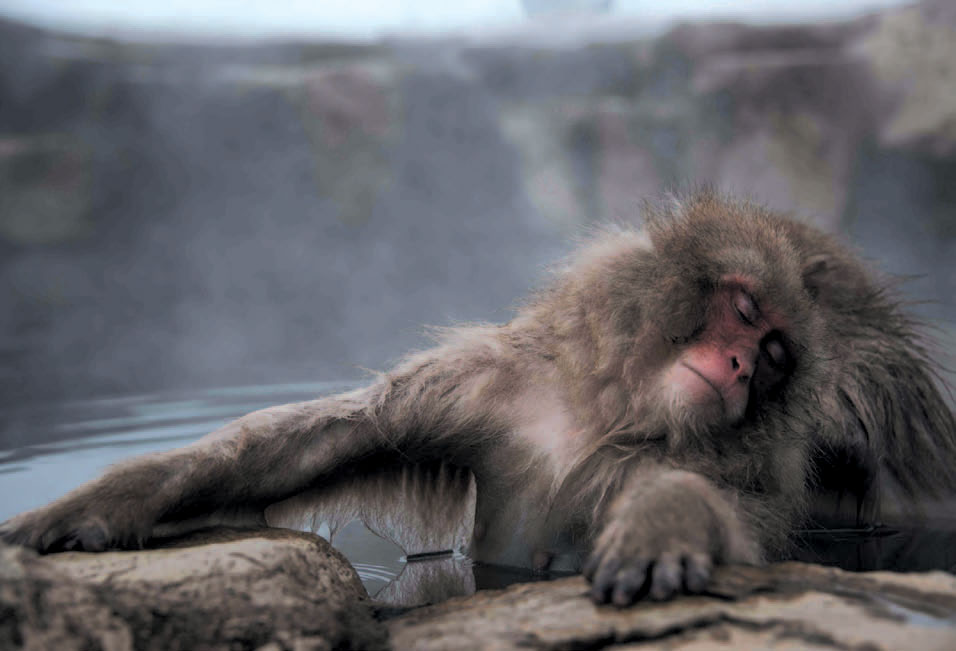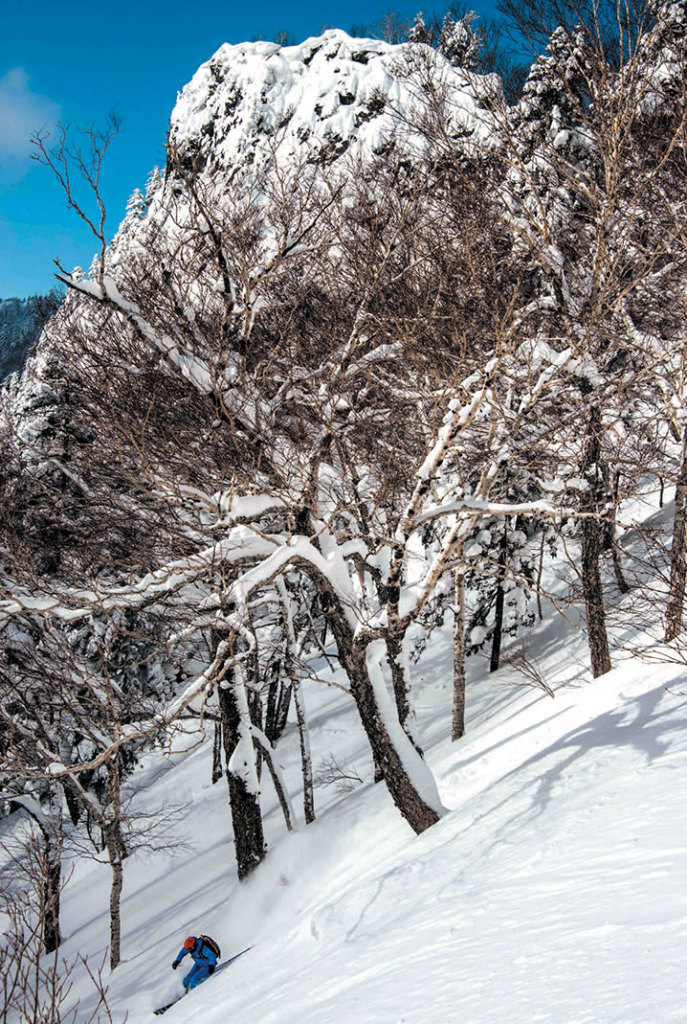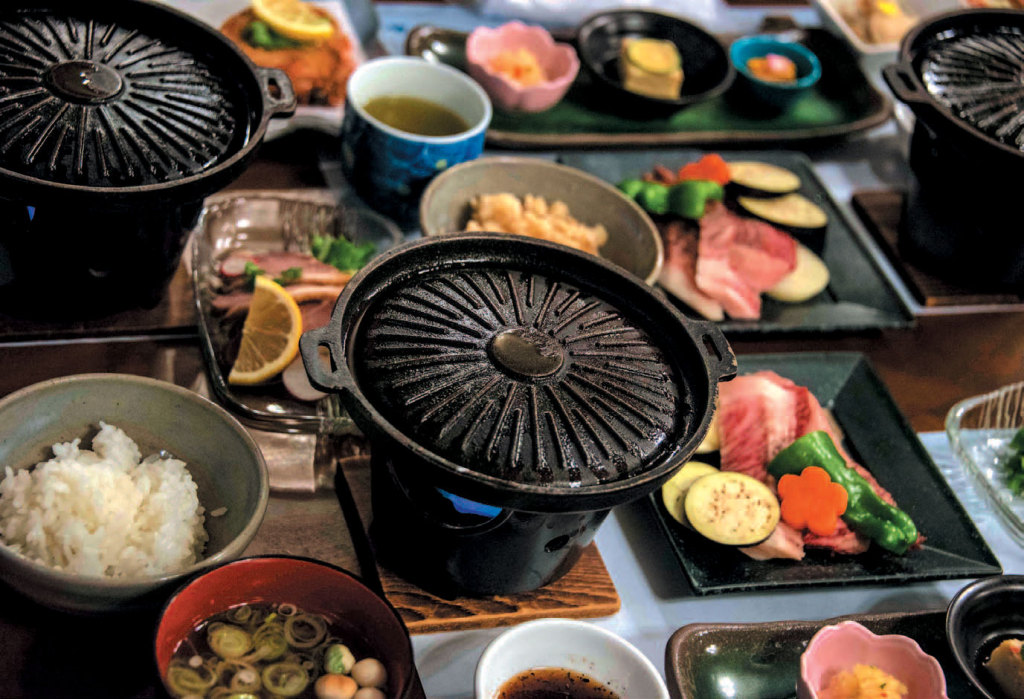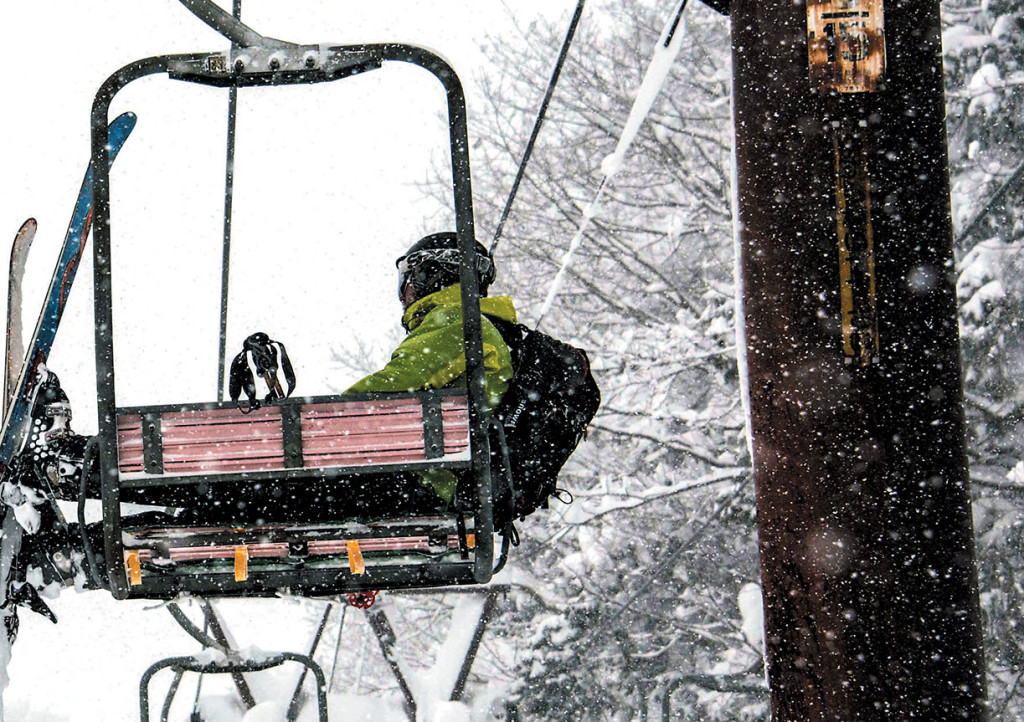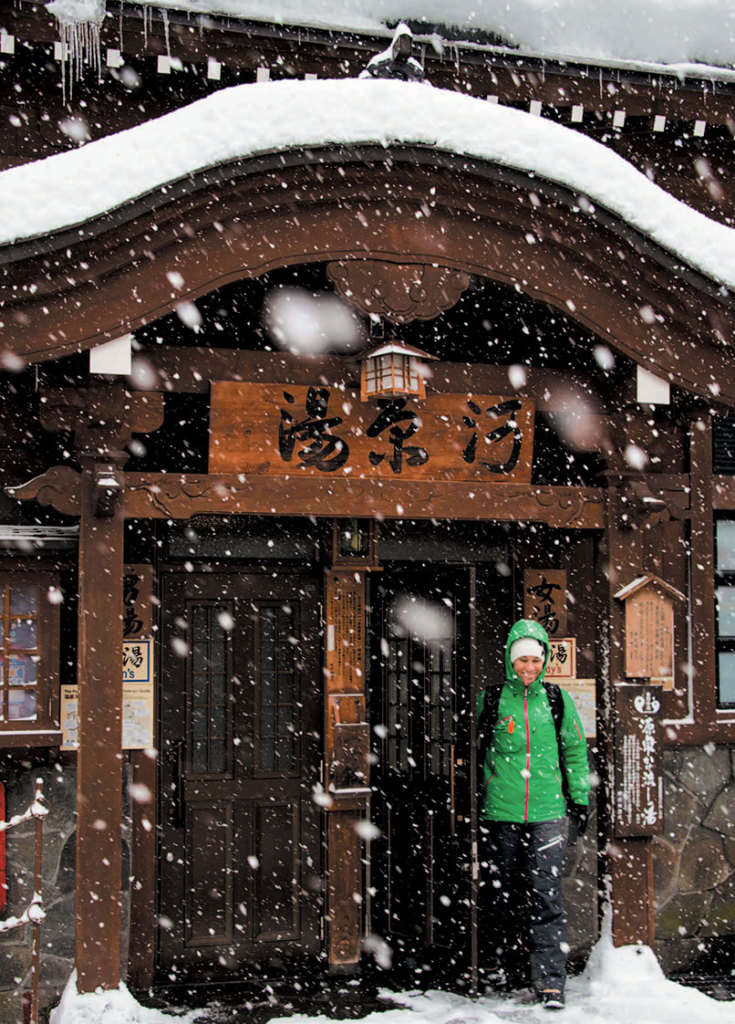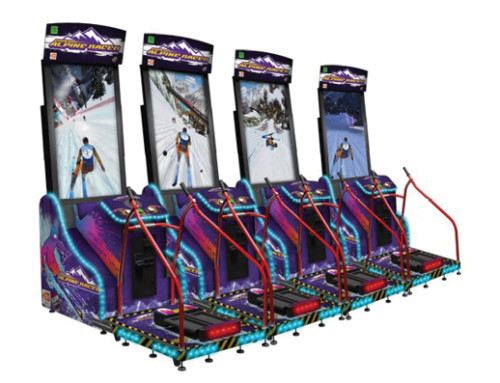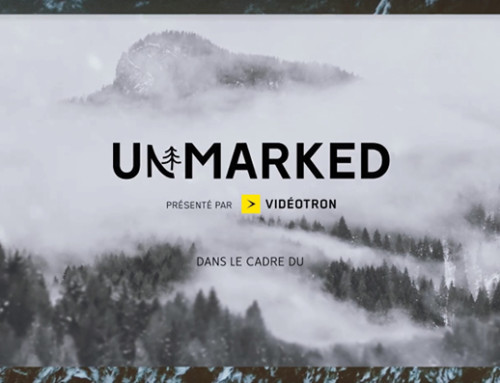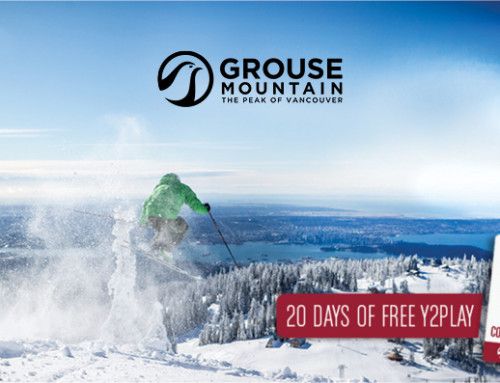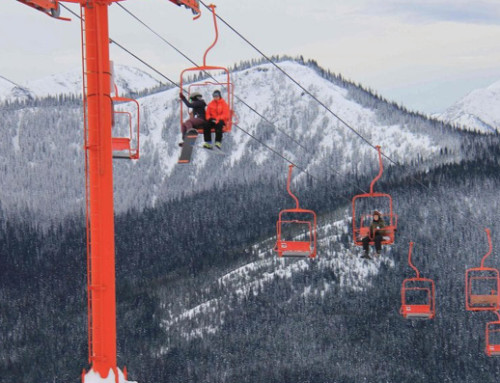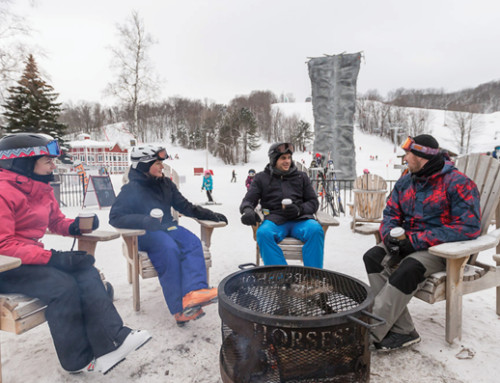The Land of the Rising Sun could be the world’s best-kept powder secret. With billowy snow and birch-lined slopes (watch out for the monkeys!), Japan’s cultural flair make this a must-see ski destination
STORY: S-Media
BY: Julie Nieuwenhuys PHOTOGRAPHY: Caroline Van ‘T Hoff
Big, white, fluffy snowflakes dance through the pitch-black sky and huge light towers illuminate the deserted runs of Niseko, Japan. It is 8 p.m. and while most skiers are enjoying yet another Asahi beer, I’m on a totally different kind of high. The eerie, elongated shadows of the birch trees appear to bring the forest to life. The runs and the surrounding woods are illuminated by 1,287 lights, making the visibility even better than in daylight. In this magical, three-dimensional dream world I fly through the feather-light powder. With an average of six days of snowfall a week, fifteen metres in a season lasting just 3.5 months, and 12-hour ski days, the chances of powder in Japan are the largest by far; it’s not roulette, it’s a guaranteed jackpot! Caroline and I, two Dutch powder junkies, couldn’t resist these numbers and cured our vitamin P deficiency by following a rigorous powder diet … this time in Japan!
Cultural Purity
For us Westerners, Japan is a country of idiosyncrasies such as heated toilet seats, adults with “Hello Kitty” clothing and vending machines selling beer accessible to anyone and located in every imaginable location. Wherever we go we spot spelling mistakes, such as ‘calefur snow falling flom loof’, ‘fast aid kit’ and ‘experts onry’, which make us giggle every time.
Japan has been virtually free of foreign influences for centuries. In this homogeneous society, with 99 percent of the country’s 127 million inhabitants being Japanese, preserving the traditional culture continues to play a major role today. A spectacular festival, the Dosojin Matsuri, is held in the village of Nozawa Onsen on Jan. 15, starring the village’s 25- and 42-year-old men. The Japanese Shinto religion regards these ages as yakudoshi, meaning unlucky. During this festival, the men display their courage by defending a gigantic wooden shrine from the other villagers who try to set it on fire. By doing this, they hope to be able to avoid a year of misfortune. It is a fierce battle, with the ‘unlucky’ men fending off blows from blazing torches to prevent the fire from setting the structure alight. This spectacle goes on until the attackers run out of ammunition. The yakudoshi men have displayed sufficient strength and courage and, after the entire structure is set on fire, peace slowly returns to this charming village.
Wintry Twisted-Branch Jungle
Clouds cover the valley like a woolly blanket, with imposing, steep mountains rising up above it. We are in Hakuba, a valley with 10 different ski areas. This is where the downhill and the super-G were held during the 1998 Nagano Winter Olympics. Although Japan has a reputation of being relatively flat, the high mountains of Hakuba look just like Alaska. That is one of the reasons why Jeremy Jones filmed part of his movie Further here. Dave, the lead guide and owner of the Evergreen Outdoor Center, introduces Hakuba to us: “Hakuba does get a bit less snow than Niseko, but it is all relative. I would give Hakuba an eight for snow and Niseko a 10. For terrain I would rate Niseko a four and Hakuba a 9 and-a-half. It is lift-accessed heli-skiing, but I guess I am biased having lived here for years.” We put on our skins and ski tour the mighty mountains of Happo-One, one of Hakuba’s ski resorts. Huge peaks and steep couloirs surround us. After a few hours it is finally time to drop into a large bowl, where 1,000 vertical metres of heavenly powder await us. The powder is so dry that our spray remains visible like a cloud of smoke in the air. Euphorically, we ski towards Dave and, as always, we are hungry for more. In the afternoon, we head into the famous Japanese birch forests, which look like a wintry jungle with their twisting branches covered in snow. We soar down in perfect conditions, which only seem to exist in the ski movies. The snow is so light that it is virtually impossible to breathe. Whooping, we arrive at the road, where the Evergreen driver awaits us. To top it all, he points out wild monkeys as they dangle from trees along the way! Side note: The best place to spot snow monkeys is the Jigokudani valley, just outside Nagano. The valley is home to around 160 Japanese macaques, which descend from the mountains every day to soak in the onsens (natural hot springs). The monkeys are almost human-like as they lazily enjoy their wonderful hot bath before returning to the forest in the evening.
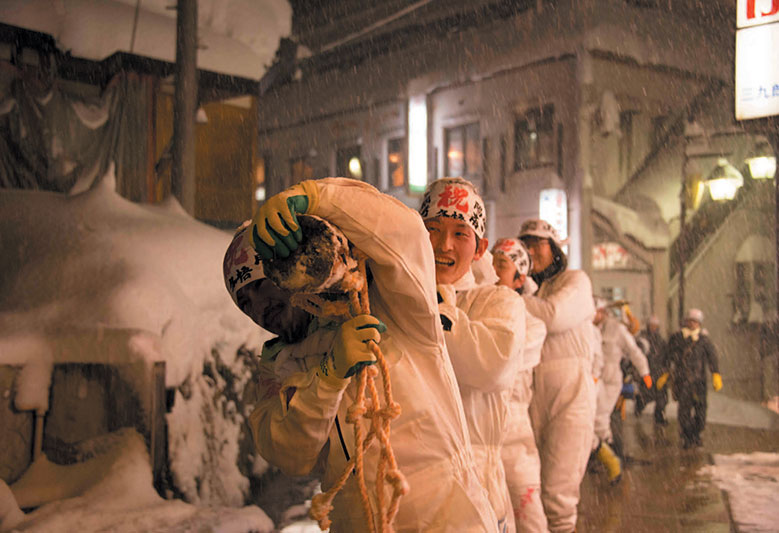
“Nana Korobi Ya Oki”
The land of the rising sun has been plagued by disaster on numerous occasions: a catastrophic tsunami, earthquakes, floods, volcanic eruptions and two atomic bombs. The typical Japanese saying “Nana korobi ya oki” (literally: fall down seven times, get up eight) expresses the great resilience of the Japanese people. This ability to bounce back is related to a culture that values personal responsibility and hard work, as well as modesty and a sense of solidarity with a community. Japan is a fascinating country with a rich (ski) history. The Austrians introduced skiing in Japan some 100 years ago. Building on the successful 1972 Winter Olympics in Sapporo, the popularity of the sport peaked in the mid-1980s, when there were as many as 700 ski areas. An economic recession in the early 1990s forced many ski areas to close and led to a decrease in the number of skiers. The Australians with their strong dollar pushed these numbers up again when they discovered the Japanese powder. Tom, a boarder from Hakuba, who we met in the lift, moved to Japan to work as an English teacher and was amazed that nobody skied off-piste yet at the time: “Before 1998 there were no foreigners in Japan and when I first came to Hakuba ten years ago, it was just me and six other snowboarders riding powder.” So Westerners – rather than the Japanese themselves – discovered the Japanese powder. Until a few years ago, skiing off-piste was still strictly prohibited in some ski areas. Nowadays, each ski area has its own specific measures to try to regulate backcountry skiing. These include signing in and out with the ski patrol by means of a liability release form, having a so-called ‘powder pass’ with you and wearing a coloured bib. Whether these measures actually help improve safety remains to be seen. In practice, these measures don’t get in the way of skiers like us. We had no trouble skiing powder both within and outside the largely empty runs!
‘Mi-So Deep’
Having worked up a ravenous appetite after a morning full of powder, we sit down in the ‘resrorant’ and order a bowl of steaming udon noodles, which we loudly slurp in keeping with Japanese custom. The healthy and delicious Japanese food has had a very positive influence on our trip and, in no time, our diet consists of miso, rice, noodles and other local delicacies. After lunch, we step into the Asahidake gondola, which was built to bring hikers to the active volcano in the summer. Although Asahidake is not an official ski area, the gondola runs every twenty minutes in wintertime. The large quantities of fresh pow prevent us from being able to see the active volcano, but we find plenty of action in the back bowl, which we named “Mi-so deep!” Asahidake is situated in the heart of the North Island in the Hokkaido Powder Belt, along with the ski areas Furano, Kamui Ski Links and Tomamu. This region is home to the driest powder in Japan, which suits our tastes just fine. Chuck, the owner of Hokkaido Powder Guides has a delicious dessert in store for us: a tour through a 700-year-old spruce forest in Daisetsuzan, Japan’s biggest national park. We immediately understand why Daisetsuzan national park is known as “the playground of the gods”; the snow there is divine!
Japanese Après: The Naked Truth
Although it’s minus 20 degrees Celsius outside, I take my ski clothes off as quickly as possible. My bare feet sting in the snow before I step into the scorching onsen. Chuck, our guide from New Zealand, is already comfortably sitting in the 48 degree Celsius water drinking a beer. He takes a sip and laughs as we rowdily try to get used to the hot water. When we have finally acclimatised a few minutes later, Chuck tells us more about the onsens: “The Japanese believe that onsens have healing powers because of the minerals they contain. It is physically and mentally cleansing and relaxing.” I soak in the hot water and enjoy a cold beer. In my mind I relive the day’s infinite powder. I conclude that I’ve been spoiled for life by 21 days of fresh snow in a row. If I where ever to be on a diet, it could only be the Wasabi Powder Diet!
When To Go
The Japanese ski season runs from mid-December to the end of March, with the most snow falling in January. Depending on the length of your stay, you can choose to visit both Hokkaido, the North Island and Honshu, the biggest island. We recommend spending a night in a ‘Ryokan,’ a traditional Japanese inn where you sleep on futons and can enjoy delicious Japanese cuisine consisting of miso soup, rice and raw fish.
Where To Go
West Hokkaido Resorts
Niseko: Niseko Boutiques: comfortable, modern and luxurious apartment, located in the centre of Hirafu. The Niseko Company, Asahi Lodge: crème de la crème, tastefully designed chalet for 10 people with a sauna, car, and spectacular views.
Rusutsu: Kamori Kanko Hotel: Huge family style hotel situated on the slopes, with a beautiful onsen, several restaurants and even a carousel in the lobby
Central Hokkaido Resorts
Furano: Tsuru Apartments: Brand-new apartments, located just a five-minute walk from the lift.
Tomamu: Hoshino Resort Hotel — large corner rooms with jacuzzi overlooking the slopes. Après-ski starts in the wave pool or or in the impressive Ice Village.
Kamui Ski Links: While there is accommodation here, the ski area is also easily accessible from Furano.
Daisetsuzan National Park
Daisetsuzan is situated in the middle of Hokkaido. On a clear day, you can see smoke from the active volcanoes from both Tokachidake and Asahidake. The Northern Star Lodge near Furano serves as a good spot to explore the national park. You can stay here for only $420 per week.
Asahidake: A variety of lodging available, from hostel to five-star hotel.
Tokachidakev: Kamihoro-so — Authentic Japanese hotel, good value for money, beautiful wooden onsen and elaborate meals (both breakfast and dinner). Highly recommended!
Honshu (home to Tokyo)
The guides of the Evergreen Outdoor Center can show you the alpine terrain of Happo-One, the forests of Cortina or one of the other surrounding areas of Hakuba and, since this winter, this is the first place where you can heli-ski in Japan!
Nozawa Onsen: Paradise Chalet — a comfortable chalet on the mountain, for larger groups up to ten people, with guaranteed first tracks.
Myoko: Hotel Refre-Akakura — Choice between Japanese (best option) or Western rooms, including delicious Japanese breakfast. Don’t forget to visit the private karaoke room.
Hakuba: Shirouma-so — As little as $100 gets you a two-person room in this beautiful, traditional hotel, which won the World Luxury Hotel Award in 2012.
Morino Lodge: this is the perfect place to meet powder buddies at the bar. In this relaxed, clean and cozy lodge the owners Craig and Matt might even show you some of their favourite runs.
Gakuto Villas: Brand-new, luxurious, modern villa for six people, within walking distance of the lifts at Happo-One.



